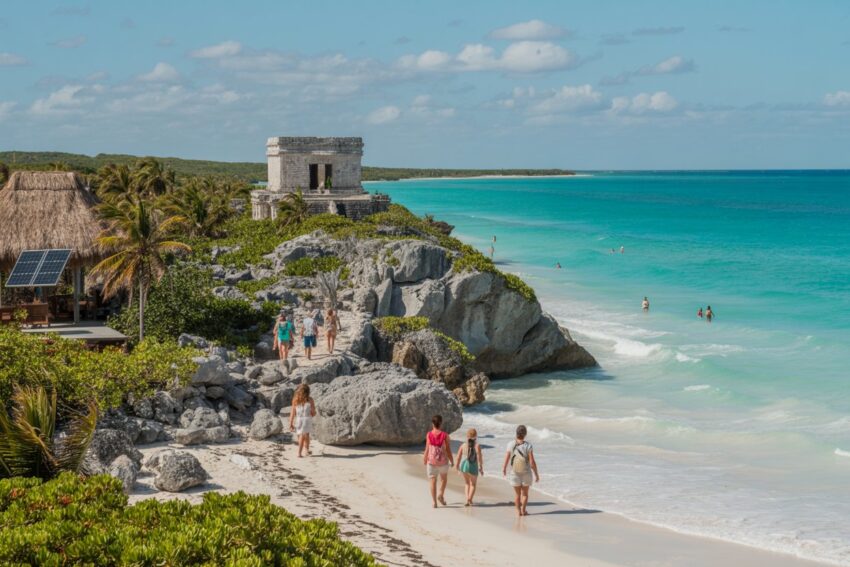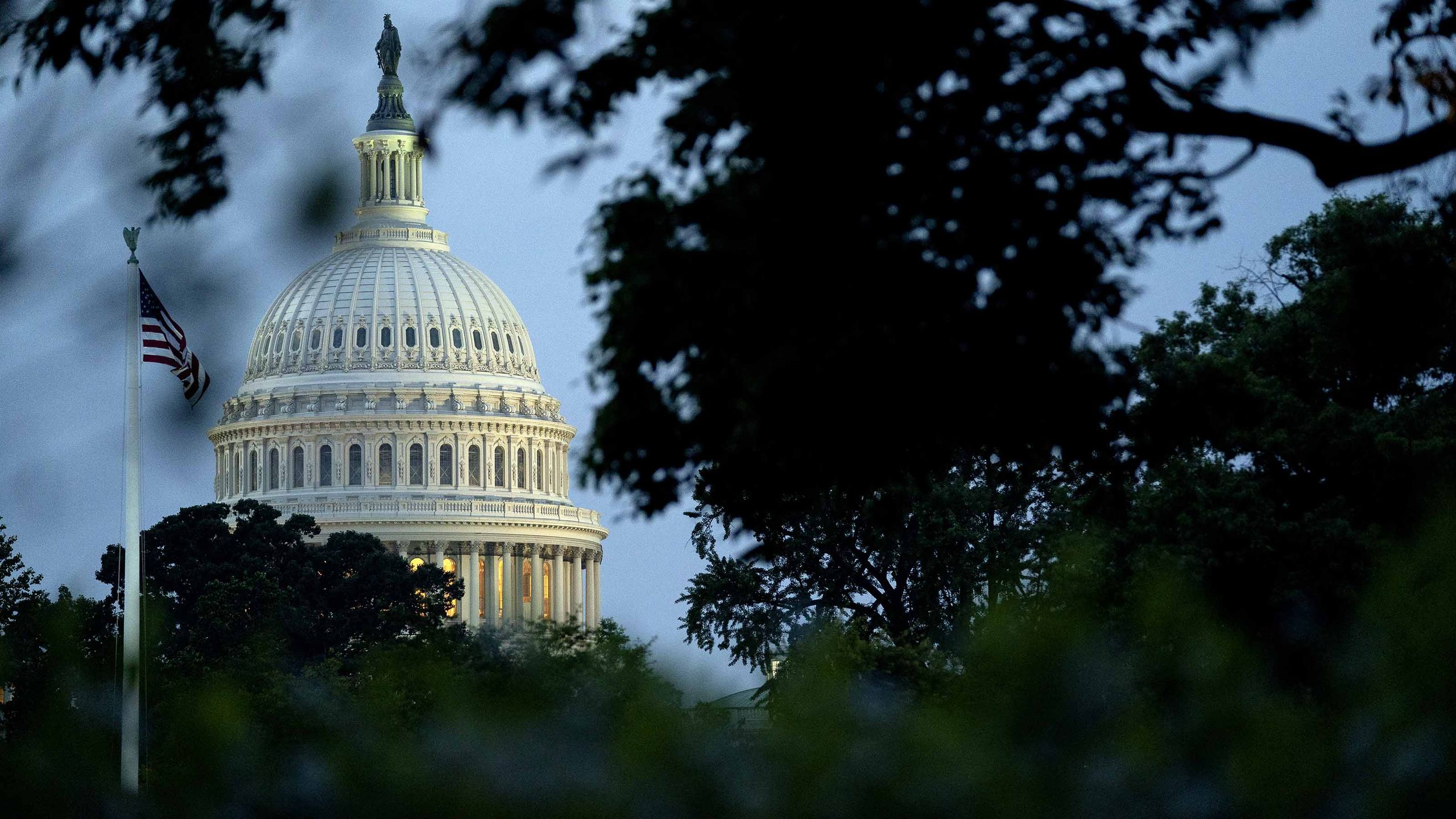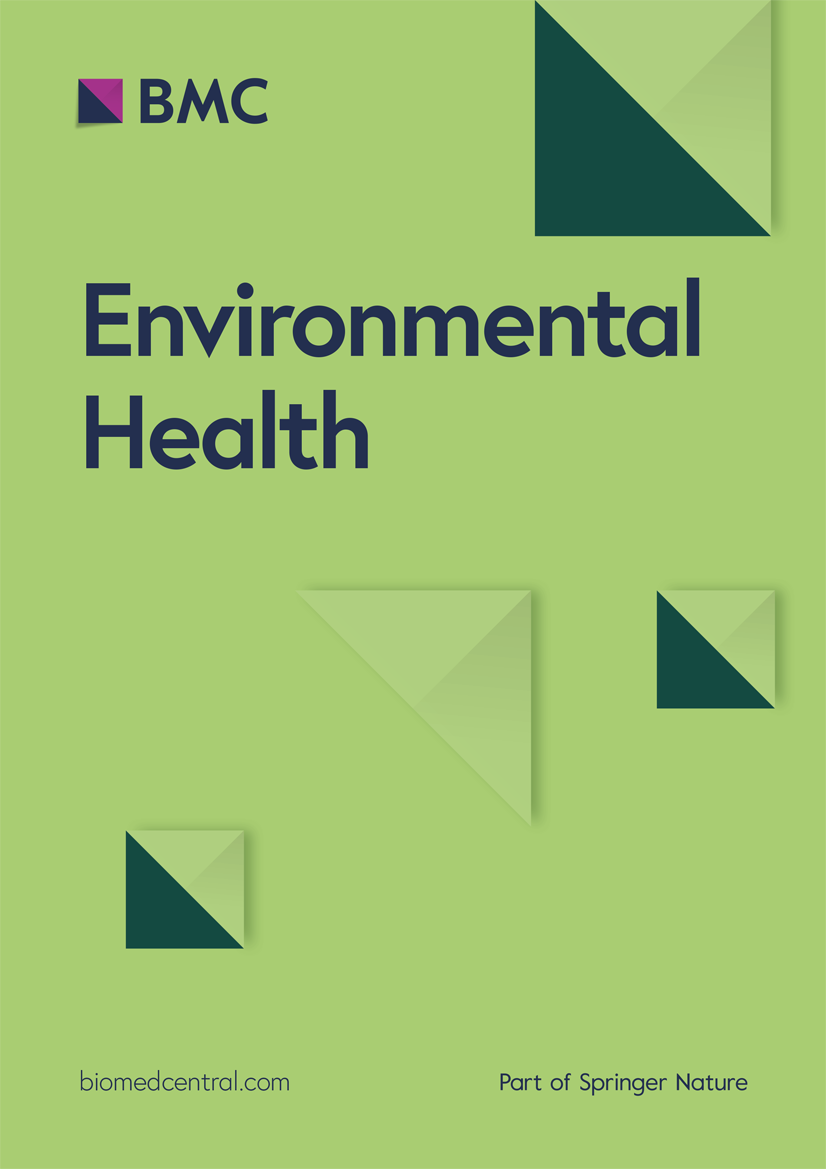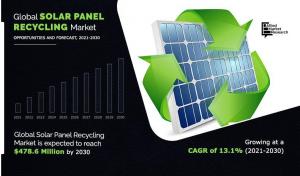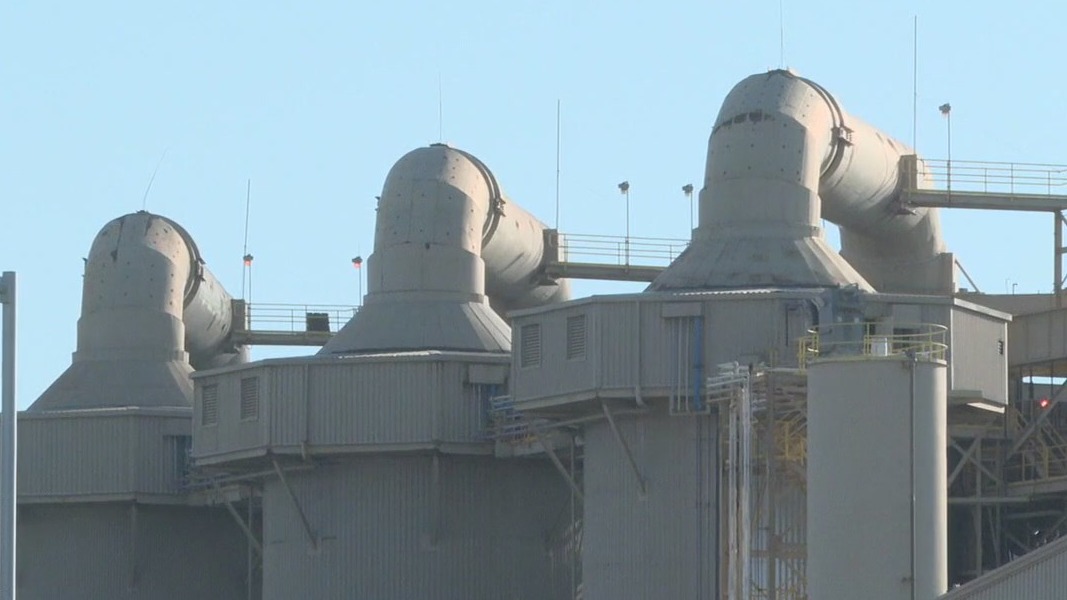Report on Sustainable Development Initiatives in Tulum, Mexico
Introduction
Tulum, a key tourist destination in Mexico, is undergoing rapid population and visitor growth. In response, the Mexican federal government, in partnership with local authorities, is implementing a comprehensive development strategy. This strategy is heavily aligned with the United Nations Sustainable Development Goals (SDGs), focusing on balancing economic growth with environmental preservation and social well-being. The initiatives aim to manage the increasing demand while safeguarding the region’s unique natural and cultural assets for future generations.
Strategic Urban Development for Sustainable Communities (SDG 9 & SDG 11)
To address infrastructure deficits resulting from increased tourism, a multi-agency plan has been developed. This plan directly supports SDG 11 (Sustainable Cities and Communities) by making Tulum more inclusive, safe, resilient, and sustainable, and SDG 9 (Industry, Innovation, and Infrastructure) by building resilient infrastructure.
Key Development Areas:
- Expansion and improvement of road networks to manage traffic flow.
- Creation of additional public green spaces.
- Implementation of enhanced waste management systems.
- Development of pedestrian-friendly zones to reduce environmental impact.
These measures are designed to ensure that urban expansion accommodates visitor growth without compromising the ecological integrity of the region.
Enhancing Public Safety and Institutional Strength (SDG 11 & SDG 16)
Ensuring the safety of residents and tourists is a priority, contributing to SDG 16 (Peace, Justice and Strong Institutions) and the safety targets within SDG 11. The government is strengthening security frameworks through a series of targeted actions.
Security Measures Implemented:
- Deployment of additional trained Response to Emergency (R.E.M) personnel in high-traffic tourist areas.
- Upgrading and expanding surveillance systems throughout the city.
- Introducing new safety protocols and measures within designated tourist zones.
These efforts aim to build confidence in the destination and foster a safe environment conducive to sustainable tourism.
Commitment to Environmental Stewardship and Responsible Consumption (SDG 12, 14, & 15)
Tulum’s identity as an eco-conscious destination is central to its appeal. Government strategies are focused on preserving its natural ecosystems, in line with SDG 14 (Life Below Water) and SDG 15 (Life on Land), while promoting sustainable practices as outlined in SDG 12 (Responsible Consumption and Production).
Environmental Protection Initiatives:
- Ecosystem Preservation: Strict regulations and sustainable construction practices are being enforced to protect vulnerable ecosystems, including coral reefs and mangrove forests.
- Sustainable Tourism Practices: Collaboration between SEMARNAT and local bodies promotes the adoption of eco-friendly lodging, renewable energy solutions, and advanced waste management systems to minimize the environmental footprint of tourism.
Fostering Economic Growth and Enhancing Visitor Experience (SDG 8)
The initiatives also aim to promote sustained, inclusive, and sustainable economic growth, as per SDG 8 (Decent Work and Economic Growth). By improving the visitor experience, Tulum can ensure the long-term viability of its tourism sector.
Service and Infrastructure Upgrades:
- Installation of new public facilities, including restrooms, visitor centers, and improved signage.
- Implementation of training programs for local staff to ensure high standards of service.
- Strategic expansion of transportation and hospitality infrastructure to meet growing demand.
Collaborative Governance for Sustainable Goals (SDG 17)
The success of Tulum’s sustainable development strategy is contingent on effective collaboration, a core principle of SDG 17 (Partnerships for the Goals). A multi-stakeholder partnership has been established to guide these efforts.
Key Stakeholders:
- Ministry of Tourism (SITURN)
- Ministry of Environment (SEMARNAT)
- Ministry of Urban Development (SEDATU)
- Municipal leadership, including the municipal president, Diego Castanon.
- The local community.
This collaborative approach ensures that economic, social, and environmental objectives are balanced, creating a unified vision for Tulum’s future.
Conclusion: A Forward Outlook for Tulum
The strategic initiatives being implemented in Tulum demonstrate a strong commitment to aligning tourism growth with the Sustainable Development Goals. By focusing on resilient infrastructure, public safety, environmental protection, and multi-stakeholder collaboration, Tulum is positioning itself as a leading model for sustainable tourism in Mexico. These efforts will ensure the preservation of its natural beauty and cultural heritage while providing an exceptional experience for visitors for years to come.
1. SDGs Addressed or Connected to the Issues Highlighted in the Article
- SDG 8: Decent Work and Economic Growth – The article focuses on managing the economic growth from tourism in a sustainable way.
- SDG 11: Sustainable Cities and Communities – A significant portion of the article discusses urban planning, infrastructure development (roads, green spaces), and waste management to accommodate the growing population and tourist numbers in Tulum.
- SDG 12: Responsible Consumption and Production – The commitment to sustainable tourism practices, including eco-friendly lodging, renewable energy, and waste management, directly relates to this goal.
- SDG 14: Life Below Water – The article explicitly mentions the need to preserve Tulum’s marine ecosystems, specifically its coral reefs.
- SDG 15: Life on Land – The focus on preserving natural beauty and protecting terrestrial ecosystems, such as mangrove forests, aligns with this goal.
- SDG 16: Peace, Justice and Strong Institutions – The efforts to improve public safety and security for both residents and tourists connect to the goal of creating safe and peaceful societies.
- SDG 17: Partnerships for the Goals – The article emphasizes the collaboration between the federal government, local authorities (like the municipal president), and various ministries (SITURN, SEMARNAT, SEDATU) to achieve sustainable development.
2. Specific Targets Under Those SDGs Identified in the Article
SDG 8: Decent Work and Economic Growth
- Target 8.9: “By 2030, devise and implement policies to promote sustainable tourism that creates jobs and promotes local culture and products.”
- Explanation: The entire article is about the Mexican government and local authorities implementing a comprehensive strategy for sustainable tourism in Tulum to manage its rapid growth, preserve its culture, and enhance the visitor experience.
SDG 11: Sustainable Cities and Communities
- Target 11.3: “By 2030, enhance inclusive and sustainable urbanization and capacity for participatory, integrated and sustainable human settlement planning and management…”
- Explanation: The article details how local leaders and various government ministries (SITURN, SEMARNAT, SEDATU) have met to “develop a comprehensive strategy for sustainable urban development,” which is a clear example of integrated planning.
- Target 11.6: “By 2030, reduce the adverse per capita environmental impact of cities, including by paying special attention to… municipal and other waste management.”
- Explanation: The new plan explicitly includes “efforts to enhance waste management systems” as a key component to reduce the environmental impact of tourism.
- Target 11.7: “By 2030, provide universal access to safe, inclusive and accessible, green and public spaces…”
- Explanation: The urban development plan mentioned in the article focuses on “increasing available green spaces” and making the town “more pedestrian-friendly.”
SDG 12: Responsible Consumption and Production
- Target 12.b: “Develop and implement tools to monitor sustainable development impacts for sustainable tourism…”
- Explanation: The article states that authorities are implementing “sustainable tourism practices that minimize environmental damage,” which includes the “promotion of eco-friendly lodging options, renewable energy solutions, and better waste management systems.” These actions are part of a broader strategy to manage the impacts of tourism.
SDG 14: Life Below Water
- Target 14.2: “By 2020, sustainably manage and protect marine and coastal ecosystems to avoid significant adverse impacts…”
- Explanation: The article specifically highlights that “The preservation of Tulum’s ecosystems, including its coral reefs… is critical to maintaining the region’s charm and appeal.”
SDG 15: Life on Land
- Target 15.1: “By 2020, ensure the conservation, restoration and sustainable use of terrestrial and inland freshwater ecosystems and their services, in particular forests, wetlands…”
- Explanation: The commitment to environmental preservation is demonstrated by the focus on protecting vulnerable areas, including Tulum’s “mangrove forests,” through “sustainable construction practices and stricter regulations.”
SDG 16: Peace, Justice and Strong Institutions
- Target 16.1: “Significantly reduce all forms of violence and related death rates everywhere.”
- Explanation: The article addresses public safety by describing government steps to ensure the “safety and security of both residents and tourists.” This is being done by “increasing the number of trained security personnel” and “enhancing its surveillance systems.”
SDG 17: Partnerships for the Goals
- Target 17.14: “Enhance policy coherence for sustainable development.”
- Explanation: The article showcases policy coherence through the described partnership between the “Mexican federal government,” “local authorities,” and multiple ministries (Tourism, Environment, Urban Development) working together on a unified strategy.
3. Indicators Mentioned or Implied in the Article
SDG 8: Decent Work and Economic Growth
- Implied Indicator: Implementation of a sustainable tourism development strategy.
- Explanation: The article’s main focus is the creation and implementation of new strategies for sustainable tourism in Tulum.
SDG 11: Sustainable Cities and Communities
- Implied Indicators:
- Expansion and improvement of road networks.
- Increase in the area of green spaces.
- Implementation of enhanced waste management systems.
- Installation of new public facilities like restrooms and visitor centers.
- Explanation: These are all specific actions mentioned in the article as part of the urban development plan to measure its progress.
SDG 12: Responsible Consumption and Production
- Implied Indicators:
- Number of eco-friendly lodging options promoted.
- Adoption of renewable energy solutions in the tourism sector.
- Explanation: The article mentions the promotion of these specific sustainable practices as part of the government’s commitment.
SDG 14: Life Below Water
- Implied Indicator: Implementation of regulations and practices to protect coral reefs.
- Explanation: The article states that the government is focusing on protecting vulnerable areas like coral reefs through stricter regulations.
SDG 15: Life on Land
- Implied Indicator: Implementation of sustainable construction practices and regulations to protect mangrove forests.
- Explanation: The article directly links the protection of mangrove forests to the enforcement of sustainable construction practices.
SDG 16: Peace, Justice and Strong Institutions
- Implied Indicators:
- Number of trained security personnel deployed in tourist areas.
- Installation of enhanced surveillance systems.
- Explanation: These are the specific measures the article mentions are being taken to improve public safety.
SDG 17: Partnerships for the Goals
- Implied Indicator: Existence of a formal collaborative framework between federal and local government entities.
- Explanation: The article describes the partnership between the federal government, local authorities, and various ministries as the foundation for the development strategy.
4. Summary Table of SDGs, Targets, and Indicators
| SDGs | Targets | Indicators |
|---|---|---|
| SDG 8: Decent Work and Economic Growth | 8.9: Devise and implement policies to promote sustainable tourism. | Implementation of a sustainable tourism development strategy. |
| SDG 11: Sustainable Cities and Communities | 11.3: Enhance sustainable urbanization and planning. 11.6: Reduce the environmental impact of cities (waste management). 11.7: Provide access to green and public spaces. |
Expansion of road networks; Increase in green spaces; Implementation of enhanced waste management systems; Installation of new public facilities. |
| SDG 12: Responsible Consumption and Production | 12.b: Develop and implement tools to monitor sustainable development impacts for sustainable tourism. | Number of eco-friendly lodging options; Adoption of renewable energy solutions. |
| SDG 14: Life Below Water | 14.2: Sustainably manage and protect marine and coastal ecosystems. | Implementation of regulations to protect coral reefs. |
| SDG 15: Life on Land | 15.1: Ensure the conservation and sustainable use of terrestrial ecosystems. | Implementation of sustainable construction practices to protect mangrove forests. |
| SDG 16: Peace, Justice and Strong Institutions | 16.1: Significantly reduce all forms of violence. | Number of trained security personnel deployed; Installation of enhanced surveillance systems. |
| SDG 17: Partnerships for the Goals | 17.14: Enhance policy coherence for sustainable development. | Existence of a formal collaborative framework between federal and local governments. |
Source: travelandtourworld.com

